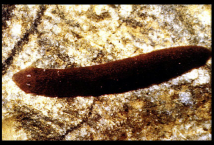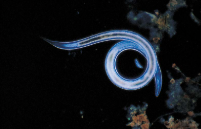apbio animal diversity
1/46
There's no tags or description
Looks like no tags are added yet.
Name | Mastery | Learn | Test | Matching | Spaced |
|---|
No study sessions yet.
47 Terms
Animals are:
Multicellular
Heterotrophs
Eukaryotic
Have tissues and differentiated cells
Eat
Reproduce and Develop
Sperm and egg meet through fertilization to form a
zygote
blastula,
multi-celled hollow ball
Protostomes
worms and bugs, develop a mouth first during fetal development.They include groups like arthropods and mollusks.
Deuterostomes
people and starfish, develop an anus before they develop mouths.
radial symmetry,
symmetry inn the up and down plane
bilateral symetry
sideways plane
cephalization
animals with head regions.
Invertebrates
animals without a backbone.
Porifera
Porifera are the sponges.
They have radial symmetry.
They are non-motile filter feeders.
Individual cells are specialized, but they have no true organs or tissues.
Cnidaria
Cnidarians include hydras, jellyfish, sea anemones, and coral.
They have radial symmetry.
They have stinging threads.
They can be polyps (stuck to the ocean floor), or medusa (floating jellyfish).
Mouths lead to gastrovascular cavities where food is digested.
Platyhelminthes
flatworms, planarians, and flukes.
They are the simplest animals with bilateral symmetry.
Flukes and tapeworms are parasitic flatworms.
Nematoda
Nematodes are roundworms.
They are the first animals to evolve a complete digestive tract.
They are used in research and found in undercooked pork.
Mollusca
Mollusca are the mollusks.
They are the first animals with a true circulatory system and a nervous system.
They have radulas which are used to scrape up food.
Mollusks have a foot for locomotion, a mass where the organs are housed, and a mantle which protects them.
Gastropods
sea slugs, snails and slugs
Bivalves
clams, oysters, mussels, and scallops (2 hinged shells)
Cephalopods
built for speed and motility, include squid and octopi; have sophisticated sense organs.
Annelida
Annelids include earthworms, Christmas tree worms, polychaetes (sand worms) and leeches.
Annelids are the first animals to have segmented bodies and a coelom.
Coelom (pronouce:selum): is a main body cavity that surrounds and contains the digestive tract/organs.
Arthropoda
Arthropods include crayfish, lobsters, crabs, barnacles, scorpions, millipedes, centipedes, spiders, ticks, and insects.
t is the largest phyla by number of animals.
Arthropods have a hard exoskeleton.
Crustaceans like lobsters and crayfish are arthropods.
Insects have 6 legs and a pair of wings; and a body made of a head, thorax, and abdomen.
Arachnids have 8 legs and include the spiders.
Echinodermata
Echinoderms are sea stars, sand dollars, and sea urchins.
They have spiny skin and an endoskeleton.
They have a water vascular system that is used for movement.
They are radially symmetrical as adults, and bilateral as larvae.
Chordata
a dorsal, hollow nerve cord
2. a notochord (flexible rod between the digestive tract and the nerve cord)
3. Pharyngeal slits (gills)
4. Muscular post-anal tail
Some chordates are actually invertebrates: the tunicates and lancelets.
Tunicates are stationary and look like small bags.
Lancelets are small, bladelike animals that live in sand.
Most chordates are
vertebrates: have a segmented backbone
Their endoskeletons include a skull
Their backbone is composed of vertebrae
agnathans
animals wiothout jaws
5 Main Classes of Vertebrates
Fish
Amphibians
Reptiles
Birds
Mammals
1st class of fish, Chondrichthyes
cartilaginous fishes such as sharks and rays. They have a lateral line system, a sense organ used to detect vibrations.
Osteichthyes
bony fishes such as tuna and trout
a buoyant swim bladder
more mobile fins
Class Amphibia is represented today by
the first land vertebrates
frogs
toads
salamanders
Their 4 limbs (tetrapods) allow them to move on land
However, amphibian larvae must develop in water (and go through metamorphosis)
Found in damp habitats
Threatened by fungal pathogens, habitat loss, acid rain, and pollution
class reptilia
able to live on land due to
waterproof scales
a shelled, amniotic egg
Modern reptiles are ectotherms (cold blooded)
They warm their bodies by absorbing heat from the environment
Include turtles, alligators, crocodiles, lizards, and snakes
endothermic,
produces own body heat
class birds
scales
amniotic eggs
No bladders
Only one ovary
Light bones
Wings and feathers
an endothermic metabolism
hollow bones
a highly efficient circulatory system
A 4 chambered heart
class mamailia
Class Mammalia descended from reptiles
Mammals are endothermic (warm blooded)
There are two unique mammalian characteristics
Hair, which insulates the body
Mammary glands, which produce milk that nourishes their young
Monotremes
mammals
lay eggs-
Marsupials
The tiny offspring complete development inside a pouch
Example: kangaroos, koalas, wombats, Tasmanian devils
eutherians, also called placentals
They have a relatively long gestation
Complete embryonic development occurs within the mother, in a sac called a placenta
porferia animals
sponges
cnidaria
jellyfish, sea anemones, hydras ,corals
Platyhelminthes animals
flatworms, planarians, and flukes.

Nematoda animals
nemotoads/roundworms

Mollusca
sea slugs, snails and slugs
clams, oysters, mussels, and scallops (2 hinged shells)
squid and octopi;
Annelida animals
earthworms, Christmas tree worms, polychaetes (sand worms) and leeches.
Arthropoda animals
crayfish, lobsters, crabs, barnacles, scorpions, millipedes, centipedes, spiders, ticks, and insects.
Echinodermata animals
sea stars, sand dollars, and sea urchins.